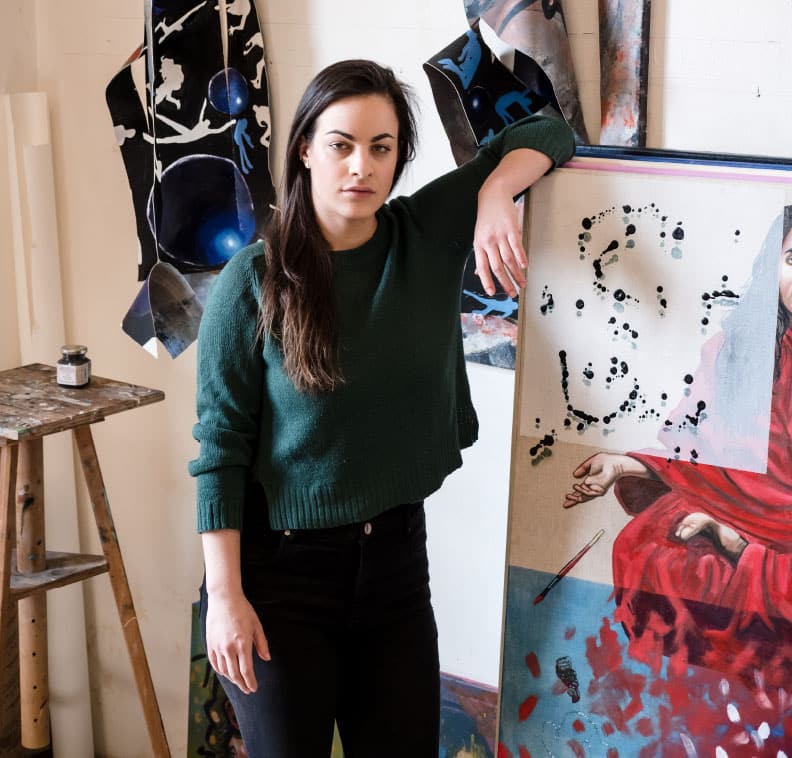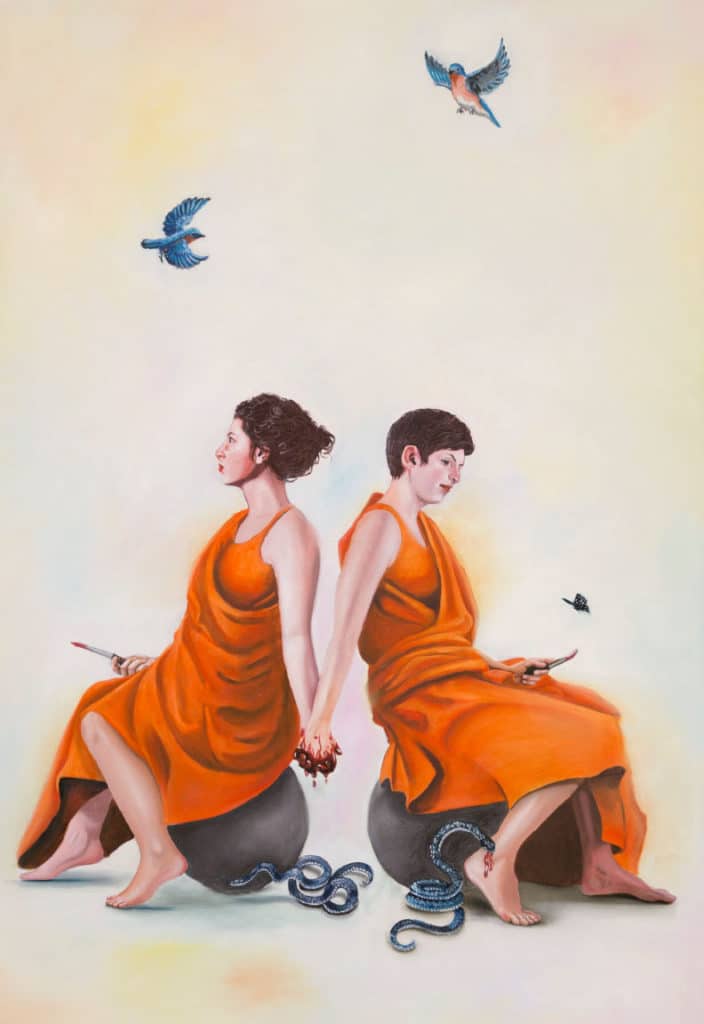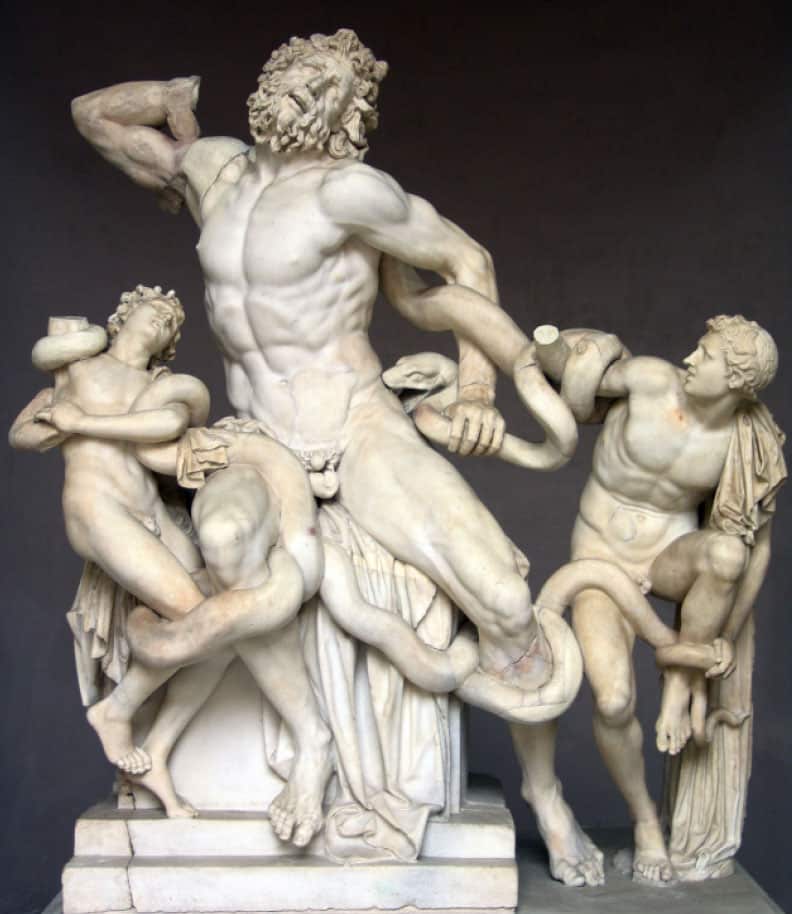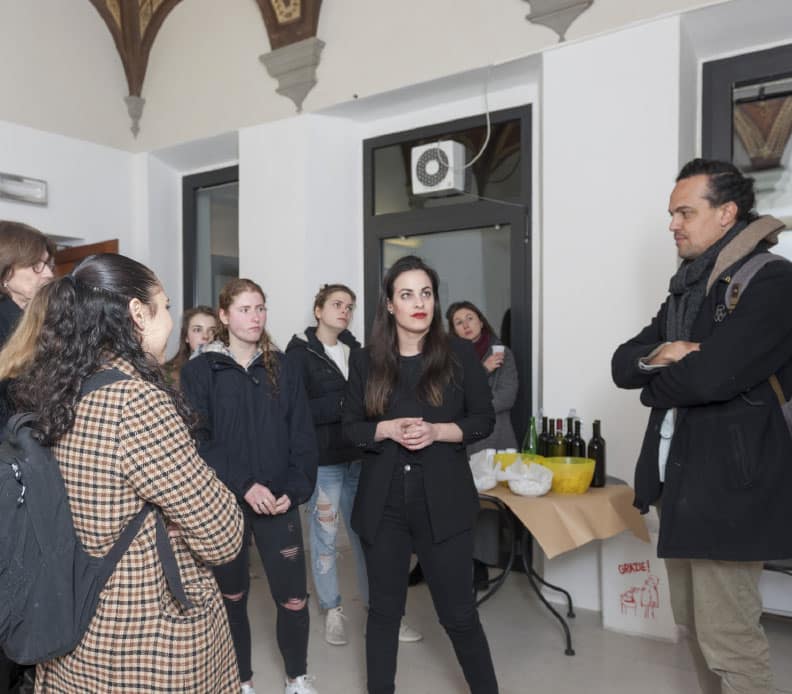A Newfound Dedication Leads A Lake Charles Artist To Great Success In Italy
Story By Brad Goins • Photos by Lindsay Johnson & Cocoa Laney
When Lindsey Johnson got her bachelor’s in art from McNeese in 2014, the degree was a landmark of what Johnson considered a “higher calling.” She knew she had reached the point where she was absolutely devoted to being a serious artist.
Her McNeese professors must have sensed that, as they encouraged Johnson to apply to the highly competitive and demanding master’s of fine arts program of the Studio Arts College International — or SACI, which is located in the heart of the renowned arts district of Florence, Italy. The paintings Johnson produced in that rigorous program have just been displayed in the MFA graduates’ exhibit in Florence.
Although Johnson’s works look absolutely contemporary, they often contain allusions to the Renaissance art she saw in Florence. Sometimes, when she examined a Renaissance work, she chose to echo a specific pose or detail — such as a depiction of the moon or of an animal — in one of her paintings. Johnson felt her work was thus “giving [that Renaissance art] another life.”
A clear example is seen in the painting about sisterhood (left) that Johnson created for her SACI exhibit. Johnson’s SACI painting on the theme of Sisters makes a clear reference to the famous sculpture Laocoon And His Sons (right). In the original, a giant, poisonous sea serpent is twined around both of Laocoon’s sons. They appear to be bound together by the serpent for the remainder of their lives. In Johnson’s painting, a small serpent is coiled near the feet of each sister.
This sort of allusion to historical art, Johnson says, enables her work to “create a kind of puzzle.” One can easily see what she means in this painting. In the original statue, father Laocoon is receiving a fatal bite from the serpent that is binding his children tightly to him. But in Johnson’s work, the parental figure is nowhere to be seen. Is the snake that’s biting the sister in Johnson’s work delivering deadly poison? Or is the snake bite merely echoing the fact that the two sisters have just become “blood sisters” by cutting their palms with knives then holding each other’s cut hands?
Johnson says that “what [she] was drawn to in the art works [of Italy to which she made reference] was [a place] where the artist [was] vulnerable, personal.” We are about to see why the vulnerable and the personal were so important to her.
A Vulnerable Artist
As Johnson began her work at SACI, some of her objectives were theoretical and political. At the start, the work was based on “the idea of the female condition.” One of her key notions was that there is need for equality for women across the board — a need she felt should be represented in her painting.
But as the work progressed, those general ideas were gradually combined with a new idea: that vulnerability would be important for this work.
This change in goals came about because Lindsey began reviewing the previous eight years of her life, revisiting a “life-changing” event in her past. She says that as a result of this event, she realized she had a “higher calling — that is, to the arts.” It was that realization that inspired her to focus on and acquire her bachelor’s in art at McNeese.
Her memories of the event began to affect the art she was making after the fact at SACI. The art began to become less theoretical and more autobiographical. In effect, the work Johnson did at SACI was about “coming of age for an individual,” she says. As one result, the work showed its audience universal situations. As Johnson put it, “Each work acts as a mirror for the artist to observe herself and capture moments in time that were crucial to her development while meditating on the larger connection to humanity.”
Another result was that the work wound up being highly personal art that left Johnson vulnerable before her audience. She would wind up calling her part of the SACI MFA exhibit “Delineation of a Void.”
Because of the vulnerability the art reflected, viewers felt comfortable about sharing their reactions to the art with Johnson. She says viewers sometimes became very emotional in stating their reactions.
Each of the works she placed in her graduation exhibit for SACI was based on a certain theme: the body, destiny, love, spirit, death and so forth. Each painting is flanked on each side by an autobiographical essay by the artist. Some of the works — such as those on the female body — she felt only female viewers would understand. But several of the artistic creations had a universal significance that spread across genders.
This art enabled Johnson to work through her memories of the “life-changing” event in her past. She came to the point of “understanding personal traumas not as weaknesses but potential strengths that enable self-determination.”
After Hours In Florence
Johnson was born and raised in Lake Charles. Now that her work at SACI is done, she’s returned to the city “because it’s [her] first home.” She’s presently applying for a position in Lafayette, and hopes to be a professor somewhere in the long term.
Her second home? That would be Florence, Italy. After getting acquainted with the cafe life and museum life of Florence, she made it her mission “to see every church that was there.” These churches are full of the work of the likes of Fra Angelico, Giotto, Michelangelo, Donatello, Lippi, Vasari and many other revered masters.
And then Johnson took on another mission — to get to know the everyday people of Florence. “I wanted to know what they thought was normal and compare it to what I thought was normal.” The purpose, she says, was to get “another view of the world.
“It changed my perspective,” she says. “I became even more patient.” The typical residents of Florence often say, “piano, piano,” which means “slowly, slowly.” To them, the words mean, “there’s no hurry.”
Of course, all that was after hours. During class time, Johnson’s professors at SACI were serious about their instruction and expected much from their students.
Students at SACI get to choose their own teacher. Johnson chose Margherita Abbozzo, whose artists books can be found in the permanent collection of the Tate Modern Museum. “She retaught [me] painting,” says Johnson.
Abbozzo often asked Johnson about particular images or colors in the great art works of Florence they viewed together. “Why is this symbolic?” asked Abbozzo. “Why is that symbolic?”
That detailed instruction — and the highly personal art it led to — brought Johnson to the point where she believed that “good art comes from somewhere deep in the artist.”
Johnson also spent a great deal of time working with Molly D. Grazia, the first MFA graduate of the SACI program. Before Grazia obtained that distinction, she worked in the Solomon R. Guggenheim Museum in New York. At this point, Grazia is best known for her installations. You can see photos of many of these at mollydigrazia.com.
In the future, Johnson hopes to expand on what she worked on for her MFA thesis at SACI.
Through the experience, she says, “I realized what my [artistic] language is. I feel proud of what I made. I think it’s going to grow and evolve.”
You can see Johnson’s work at lindseykatharinejohnson.com.





















Comments are closed.